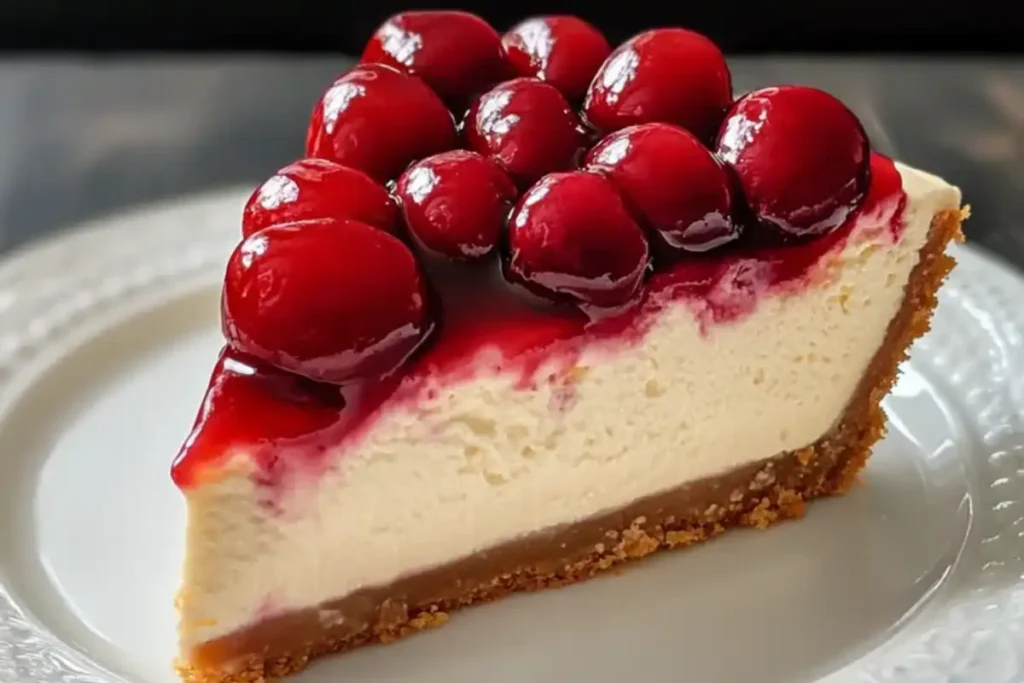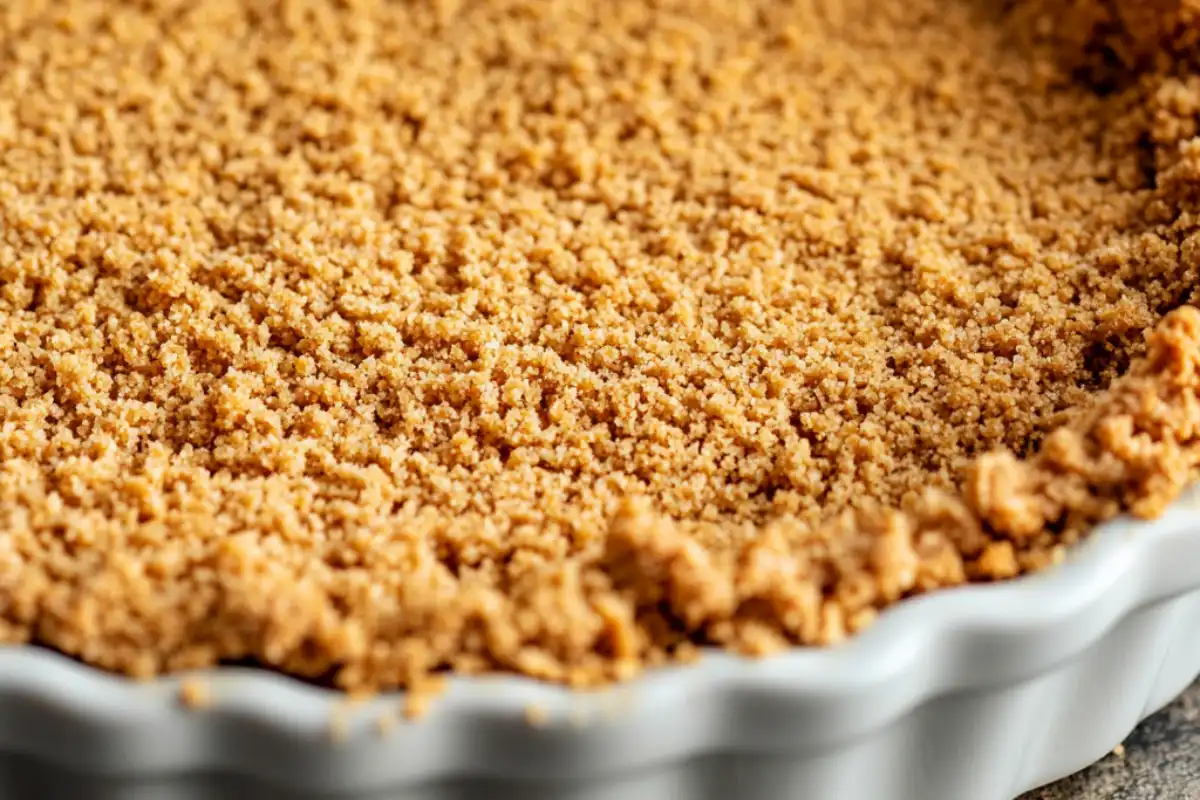When preparing a pie or cheesecake, one of the key questions you might have is: Should you bake a graham cracker crust before filling? This step can make a big difference in both texture and flavor. Understanding whether or not you should bake a graham cracker crust before filling depends on the type of dessert you’re making. For baked desserts like cheesecakes and custard pies, it’s often recommended to pre-bake the crust to ensure it remains crisp and doesn’t turn soggy. However, even for no-bake desserts, there are scenarios where baking the crust first is beneficial. This guide will help you decide whether you should bake a graham cracker crust before filling and offer tips for achieving the best results.
Understanding Graham Cracker Crusts
Graham cracker crusts are a popular choice for a wide range of desserts because they’re simple to make and offer a sweet, slightly crunchy foundation. These crusts are made from crushed graham crackers, melted butter, and sugar, which are combined and pressed into a pie dish. You can find pre-made options in stores, or you can easily make one from scratch.

The main question bakers face is whether pre-baking a graham cracker crust is necessary or beneficial. The answer depends largely on the type of dessert you’re preparing and the consistency you’re aiming for.
For a comprehensive introduction to working with graham cracker crusts, see our related guide: Do You Have to Cook Pre-made Graham Cracker Crust?.
When Should You Bake a Graham Cracker Crust?
There are several scenarios where baking your graham cracker crust before filling it is either necessary or highly recommended:
1. For Baked Pies and Cheesecakes
If you’re making a dessert that requires further baking after the filling is added, such as a cheesecake or a custard pie, pre-baking the crust helps it set and prevents it from becoming soggy. Pre-baking gives the crust a head start, allowing it to develop a firmer, more stable base that can hold up against a heavy filling.

2. To Enhance Texture and Flavor
Baking the crust caramelizes the sugar and crisps up the graham crackers, resulting in a deeper, richer flavor and a crunchier texture. This is especially useful if you want a contrast between the crunchy crust and the creamy filling.
3. To Prevent Sogginess
When your pie or cheesecake filling is moist, it can gradually seep into the crust, making it soggy over time. Pre-baking the crust creates a moisture barrier, which is particularly important if your dessert will be refrigerated for an extended period before serving.
For a delicious and reliable graham cracker crust recipe that you can bake before adding the filling, check out this homemade graham cracker crust guide.
When Baking Is Optional
There are also situations where baking the crust isn’t strictly necessary. For instance:
1. For Quick No-Bake Desserts
If you’re making a dessert that doesn’t require any baking, such as a pudding pie or an icebox cake, you can skip the baking step. The filling in these recipes typically sets up without needing the extra firmness that baking provides. However, if you prefer a firmer texture or a more pronounced flavor, a quick bake is still an option.
2. For Simple Chilled Treats
For desserts that don’t have a high moisture content, such as peanut butter pies or ice cream cakes, baking is optional. These types of fillings tend to hold their shape well without requiring a baked crust.
For more guidance on refining your baking techniques and knowing when to bake your crust, explore these baking skills tips.
How to Properly Bake a Graham Cracker Crust
If you decide that baking your graham cracker crust is the right choice for your dessert, here are the steps to follow to ensure it turns out perfectly:
Step 1: Preheat Your Oven
Set your oven to 350°F (175°C). This is the standard temperature for baking most graham cracker crusts. Preheating is essential to achieve even cooking and a golden-brown finish without burning.
Step 2: Prepare the Crust
If you’re using a pre-made crust, it’s still beneficial to give it a quick brush with melted butter. This step adds richness and helps the crust crisp up. For homemade crusts, ensure that the mixture is evenly pressed into the pie dish, using a flat-bottomed object like a measuring cup to compact it.
Step 3: Use a Baking Sheet
Place the crust on a baking sheet before putting it in the oven. This provides stability, prevents warping or cracking, and makes it easier to transfer in and out of the oven. A baking sheet also catches any drips or spills, making cleanup simpler.
Step 4: Bake the Crust
Bake the crust for 8-10 minutes, or until it turns light golden brown and releases a fragrant, buttery aroma. Keep a close eye on it during the last few minutes, as graham cracker crusts can burn quickly.
Step 5: Cool the Crust
After baking, remove the crust from the oven and allow it to cool completely on a wire rack before adding your filling. Cooling helps the crust firm up, making it easier to slice and ensuring that it holds its shape.
Avoiding Common Mistakes
To get the best results when baking a graham cracker crust, here are some common mistakes to avoid:
- Overbaking: Graham cracker crusts can go from golden brown to burnt in a matter of minutes. Monitor the crust closely during baking.
- Uneven Distribution: Ensure that the crust is pressed evenly into the dish. Gaps or thin spots can lead to cracking during baking or when cutting slices.
- Not Using Enough Butter: Butter is crucial for binding the crust together. If you don’t use enough, the crust can crumble easily.
Enhancing the Flavor of a Graham Cracker Crust
Want to take your graham cracker crust to the next level? Here are a few ways to add extra flavor:
- Cinnamon and Sugar: Sprinkling a bit of cinnamon and sugar on top of the crust before baking can add warmth and spice, complementing fillings like apple or pumpkin.
- Vanilla or Almond Extract: Brushing the crust with a small amount of vanilla or almond extract before baking adds a subtle, aromatic flavor.
- Chocolate Graham Crackers: For a richer crust, swap regular graham crackers for chocolate graham crackers. This works beautifully for decadent desserts like chocolate cream pie.
Creative Ways to Use a Graham Cracker Crust
While graham cracker crusts are most commonly associated with sweet desserts, their versatility goes beyond pies and cheesecakes.
1. Savory Applications
Surprisingly, graham cracker crusts can be used in savory dishes as well. The slight sweetness of the crust pairs well with savory fillings, creating a unique contrast. For example, try using a graham cracker crust as the base for a roasted vegetable quiche or a savory tart filled with creamy cheeses and herbs.
For inspiration on using unique crusts in your meals, check out this guide on making cinnamon roll pancakes.
2. Layered Parfaits
Rather than making a full pie, crumble your baked graham cracker crust and use it as a layer in parfaits or trifles. Combine with layers of whipped cream, fresh fruit, and chocolate mousse for a no-bake dessert that’s quick, easy, and crowd-pleasing.
3. Frozen Treats
Frozen desserts like ice cream pies are another great use for graham cracker crusts. Simply fill the crust with your favorite ice cream, then freeze until firm. You can add layers of fudge, caramel, or crushed cookies to create a more indulgent dessert.
Frequently Asked Questions (FAQs)
Do You Need to Bake a Graham Cracker Crust for No-bake Recipes?
No, baking is not required for no-bake recipes. However, a quick bake can enhance the flavor and texture of the crust, making it crispier and more flavorful.
Can You Freeze a Graham Cracker Crust?
Yes! Freezing a graham cracker crust is an excellent option if you want to prepare in advance. Wrap the crust tightly in plastic wrap and freeze until ready to use. Thaw in the refrigerator before adding the filling.
How Long Does a Graham Cracker Crust Last?
A baked graham cracker crust can be stored at room temperature for up to 2 days. For longer storage, wrap it and keep it in the refrigerator for up to a week or freeze it for up to 3 months.
Can I Make My Own Graham Cracker Crust Instead of Using a Pre-made One?
Absolutely! Making your own graham cracker crust is quick and allows for customization. You can control the sweetness and adjust the thickness to suit your preferences.
Conclusion: The Verdict on Baking Graham Cracker Crusts
Baking a graham cracker crust can be a game-changer for many desserts, whether you’re aiming for a crispier texture, a richer flavor, or simply want to avoid sogginess. Understanding when and how to bake your crust is key to achieving the best results.
For more insights on working with graham cracker crusts in different desserts, explore this pumpkin pie with graham cracker crust recipe, which is a perfect example of how pre-baking the crust can enhance your dessert.


1 thought on “Should You Bake a Graham Cracker Crust Before Filling?”